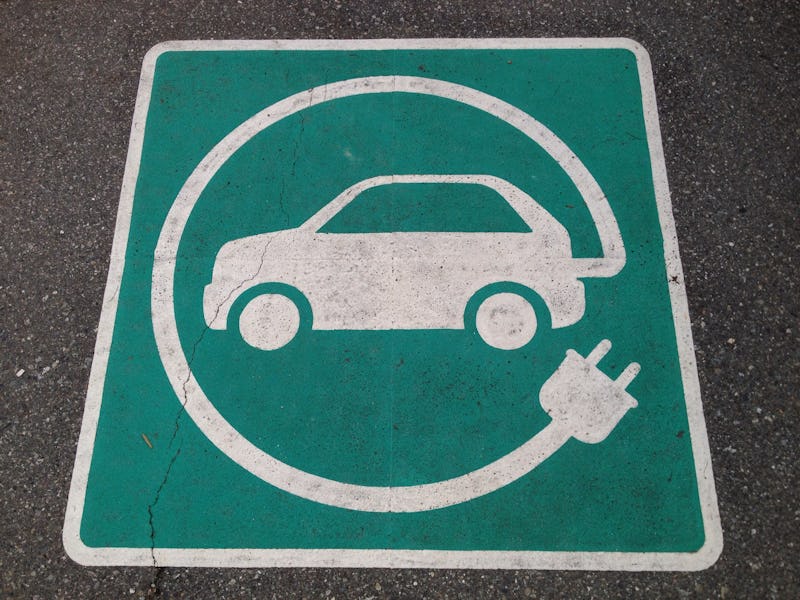Gas Prices Forced Electric Cars Out of Their Awkward Phase
Once considered the domain of the eco-nerd, electric cars are now mainstream.

Over the past decade, the public perception of electric cars has shifted dramatically: Surveys show that teens love Tesla, the Chevrolet Bolt was named car of the year, and in Shanghai, China, a plug-in hybrid Cadillac is winning over millennials. How did we get here?
“As more electric vehicles are taking off around the world — especially in places like Oslo, where they have become very popular — people are coming to realize that they’re not just a passing fad but something credible for the future,” Naomi King, a postdoctoral researcher at Oxford Brookes University, tells Inverse.
In the recent past, fully electric and hybrid vehicles were seen as weird-shaped boxes reserved for eco-geeks. But the Great Electric Car Opinion Change can be traced back not to mid-aughts bloggers or futuristic battery tech, but to the 1973 Arab oil embargo.
King is something of an expert when it comes to the psychological processes behind electric vehicle adoption. She co-authored a 2013 paper, published in the journal Transportation Research Part F: Traffic Psychology and Behaviour, that surveyed British electric vehicle drivers to see how stereotypes had changed over the years.
The work proved fascinating. Interestingly, a lot of UK respondents had preconceived notions about electric cars based on Britain’s “milk floats,” electric milk delivery vehicles introduced in the 1950s — with top speeds of around 10 mph:
A milk float: not exactly a Tesla Model S.
These preconceptions were present in the United States, too. An April 1956 issue of Popular Mechanics described the electric golf cart as the most popular way to get around national courses. Stagnation in electric vehicle development in the early-to-mid 20th century, due to the more promising features in fuel vehicles, meant that people’s only interaction with an electric vehicle was most likely a golf cart or milk float.
King’s research shows the growing visibility of modern electric vehicles created two new groups: people who were open to reassessing the current capabilities of EVs, and people with positive feelings about the new tech. People with exposure to electric cars had positive feelings about the technology.
This boost in exposure can be traced back to an oil dispute over 40 years ago. In 1973, the Arab world placed an embargo on the United States for its role in supplying the Israeli military. The ensuing gas shortages led to the establishment of the corporate average fuel economy (CAFE) standards, which regulates the average fuel consumption of a manufacturer’s fleet of vehicles.
Those standards, subject to heated debate, led to manufacturers seeking to produce eco-friendly affordable cars to offset gas-guzzling supercars in their average figure. New technologies like lithium-ion batteries made electric cars more feasible way of meeting those regulations. The Tesla Roadster proved in 2008 that electric cars could be cool and desirable, while the 2010 Nissan Leaf showed they could be produced at an attractive price point.
Tesla Roadster.
“It then gives them a little more freedom to develop products at the top end, so without that lineup of EVs, you’re going have to have broadly average compliance in CO2 across the portfolio,” Aaron Dale, a senior automotive analyst at IHS Markit, tells Inverse. “That gives you the freedom to pursue some of those high-performance vehicles that can add a lot of brand prestige.”
Peter Rawlinson, the chief technological officer for Lucid Motors, an electric car start-up that aims to rival Tesla, should know a thing about design. He was the chief engineer for the Tesla Model S before going to Lucid. Rawlinson’s Lucid Air — which the company wants to start producing in December 2019 — is a cool-looking machine.
“We don’t want to create something which is quirky,” Rawlinson said in January at the New York Auto Show. “It seems that so many of these electric cars look very unattractive. I don’t know if there’s some unwritten rule that they should be unattractive. We want to make something with great emotional appeal that really tugs at the heart strings … People will buy it almost despite it being electric, because they just want it.”
As technologies improve, automakers are pouring money into efforts to ensure they stay ahead of the growing cultural shift. General Motors reportedly loses $9,000 on every Chevy Bolt, and Tesla has yet to make an annual profit. When consumers decide to switch to electric, automakers will want to make sure people think of their brand first. But there’s still work to be done.
“Although public attitudes about EVs do seem to be changing on a broad scale, many people do still seem to hold ambivalent or negative attitudes (some media reports over-emphasize the positive side quite a lot),” King says. While Tesla and the like seem cool to the superfans, there’s still an unconverted majority out there yet to fully shed the nerd image.